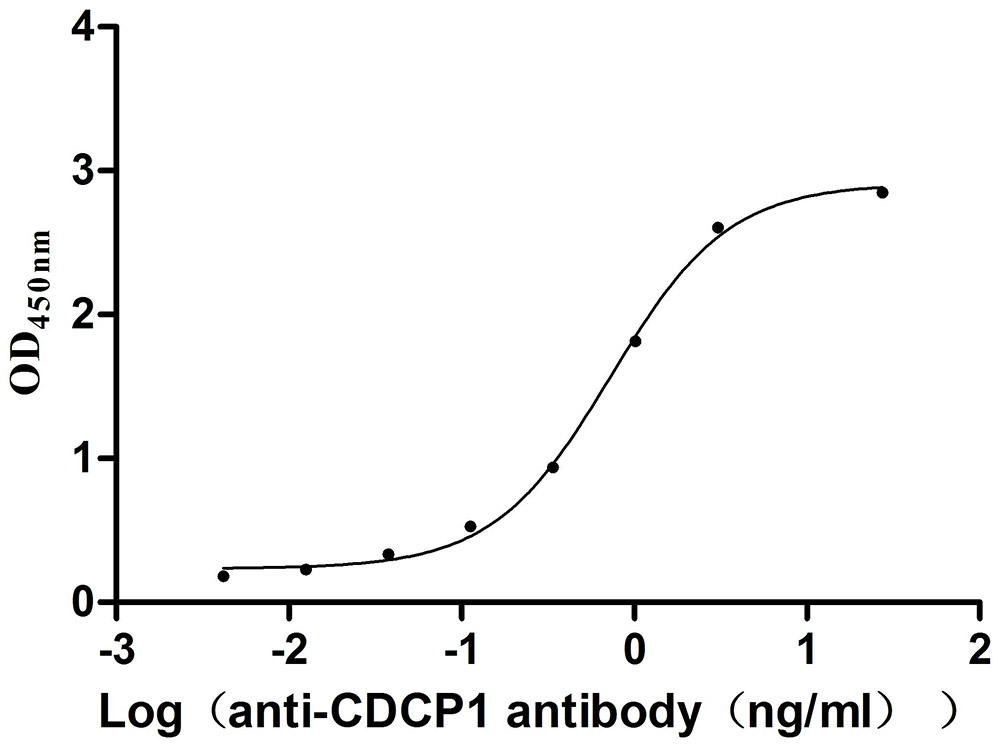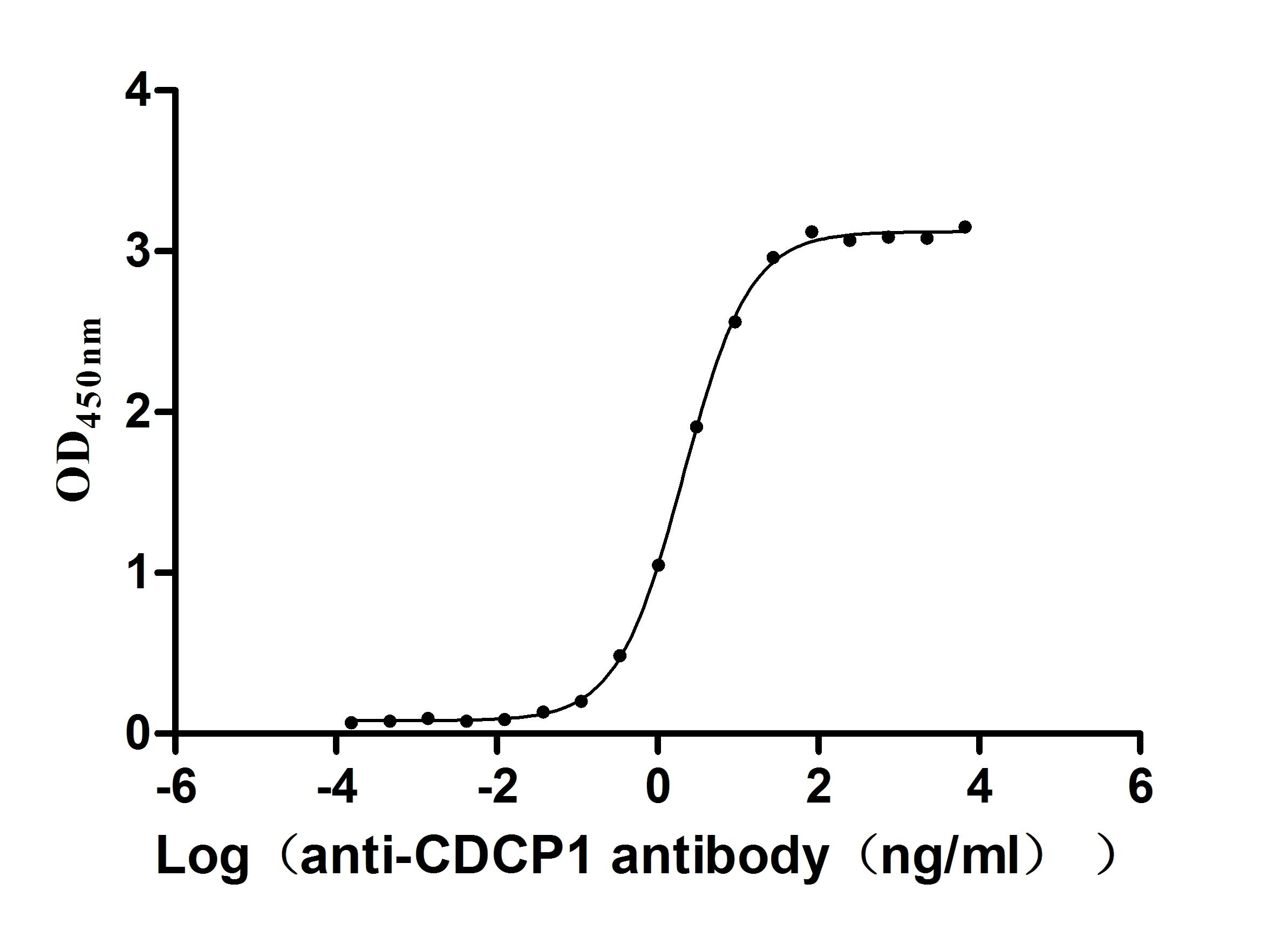Recombinant Mouse Neural Wiskott-Aldrich syndrome protein (Wasl)
-
中文名称:小鼠Wasl重组蛋白
-
货号:CSB-YP846002MO
-
规格:
-
来源:Yeast
-
其他:
-
中文名称:小鼠Wasl重组蛋白
-
货号:CSB-EP846002MO
-
规格:
-
来源:E.coli
-
其他:
-
中文名称:小鼠Wasl重组蛋白
-
货号:CSB-EP846002MO-B
-
规格:
-
来源:E.coli
-
共轭:Avi-tag Biotinylated
E. coli biotin ligase (BirA) is highly specific in covalently attaching biotin to the 15 amino acid AviTag peptide. This recombinant protein was biotinylated in vivo by AviTag-BirA technology, which method is BriA catalyzes amide linkage between the biotin and the specific lysine of the AviTag.
-
其他:
-
中文名称:小鼠Wasl重组蛋白
-
货号:CSB-BP846002MO
-
规格:
-
来源:Baculovirus
-
其他:
-
中文名称:小鼠Wasl重组蛋白
-
货号:CSB-MP846002MO
-
规格:
-
来源:Mammalian cell
-
其他:
产品详情
-
纯度:>85% (SDS-PAGE)
-
基因名:
-
Uniprot No.:
-
别名:WaslNeural Wiskott-Aldrich syndrome protein; N-WASP
-
种属:Mus musculus (Mouse)
-
蛋白长度:Full Length of Mature Protein
-
表达区域:2-501
-
氨基酸序列SSGQQPPRR VTNVGSLLLT PQENESLFSF LGKKCVTMSS AVVQLYAADR NCMWAKKCSG VACLVKDNPQ RSYFLRIFDI KDGKLLWEQE LYNNFVYNSP RGYFHTFAGD TCQVALNFAN EEEAKKFRKA VTDLLGRRQR KSEKRRDAPN GPNLPMATVD IKNPEITTNR FYGSQVNNIS HTKEKKKGKA KKKRLTKADI GTPSNFQHIG HVGWDPNTGF DLNNLDPELK NLFDMCGISE AQLKDRETSK VIYDFIEKTG GVEAVKNELR RQAPPPPPPS RGGPPPPPPP PHSSGPPPPP ARGRGAPPPP PSRAPTAAPP PPPPSRPGVV VPPPPPNRMY PPPPPALPSS APSGPPPPPP PSMAGSTAPP PPPPPPPPPG PPPPPGLPSD GDHQVPAPSG NKAALLDQIR EGAQLKKVEQ NSRPVSCSGR DALLDQIRQG IQLKSVSDGQ ESTPPTPAPT SGIVGALMEV MQKRSKAIHS SDEDEDDDDE EDFEDDDEWE D
-
蛋白标签:Tag type will be determined during the manufacturing process.
The tag type will be determined during production process. If you have specified tag type, please tell us and we will develop the specified tag preferentially. -
产品提供形式:Lyophilized powder
Note: We will preferentially ship the format that we have in stock, however, if you have any special requirement for the format, please remark your requirement when placing the order, we will prepare according to your demand. -
复溶:We recommend that this vial be briefly centrifuged prior to opening to bring the contents to the bottom. Please reconstitute protein in deionized sterile water to a concentration of 0.1-1.0 mg/mL.We recommend to add 5-50% of glycerol (final concentration) and aliquot for long-term storage at -20℃/-80℃. Our default final concentration of glycerol is 50%. Customers could use it as reference.
-
储存条件:Store at -20°C/-80°C upon receipt, aliquoting is necessary for mutiple use. Avoid repeated freeze-thaw cycles.
-
保质期:The shelf life is related to many factors, storage state, buffer ingredients, storage temperature and the stability of the protein itself.
Generally, the shelf life of liquid form is 6 months at -20°C/-80°C. The shelf life of lyophilized form is 12 months at -20°C/-80°C. -
货期:Delivery time may differ from different purchasing way or location, please kindly consult your local distributors for specific delivery time.Note: All of our proteins are default shipped with normal blue ice packs, if you request to ship with dry ice, please communicate with us in advance and extra fees will be charged.
-
注意事项:Repeated freezing and thawing is not recommended. Store working aliquots at 4°C for up to one week.
-
Datasheet :Please contact us to get it.
靶点详情
-
功能:Regulates actin polymerization by stimulating the actin-nucleating activity of the Arp2/3 complex. Involved in various processes, such as mitosis and cytokinesis, via its role in the regulation of actin polymerization. Together with CDC42, involved in the extension and maintenance of the formation of thin, actin-rich surface projections called filopodia. In addition to its role in the cytoplasm, also plays a role in the nucleus by regulating gene transcription, probably by promoting nuclear actin polymerization. Binds to HSF1/HSTF1 and forms a c...显示更多
-
基因功能参考文献:
- N-WASP regulates cortical neuron migration mainly through its polyPro and VCA domains. PMID: 29785947
- It has been shown in a genetic psoriasis model that N-WASP controls IL-23 expression in keratinocytes by regulating the degradation of the histone methyltransferases G9a and GLP, and H3K9 dimethylation of the IL-23 promoter. PMID: 29650963
- Wound healing was faster in N-WASP(FKO) compared to controls, and N-WASP deficient fibroblasts were found to have enhanced collagen gel contraction properties. These results suggest that N-WASP deficiency in fibroblasts improves wound healing by growth factor-mediated enhancement of keratinocyte proliferation and increased wound contraction. PMID: 27909303
- Myogenic differentiation depends on the expression regulation patterns of Grb2 and N-WASP. PMID: 27965114
- Data (including data from studies in knockout mice) suggest that Cnr1 (cannabinoid receptor 1) activation impacts actin cytoskeleton polymerization/stability via Wasl in growth cones of developing neurons and in synaptic spines of mature neurons. PMID: 26496209
- Our data suggests that the N-WASP-Arp2/3 actin polymerization machinery generates branched-actin arrays at an advanced stage of blood-testis barrier remodeling. PMID: 24967734
- N-terminus of Cas associates with the FAK-N-WASP complex at the protrusive edge of the cell and that the C-terminus of Cas associates with the immobilized integrin-SFK cluster. PMID: 24481817
- Toca-1(knockdown) cells have defects in formation of myotubes probably due to reduced activity of actin cytoskeleton regulators such as N-WASP. PMID: 24861867
- N-WASP plays a unique role in the down-regulation of BCR signaling at the cell surface. PMID: 24223520
- Our results suggest that N-WASP plays a critical role in normal brain development and implicate actin cytoskeleton regulation as a vulnerable axis frequently deregulated in hydrocephalus. PMID: 24462670
- These findings elucidate how junctional actin dynamics via Cdc42/N-WASP signaling cell-autonomously control not only epithelial delamination but also cell differentiation during mammalian organogenesis. PMID: 24449844
- actin dynamics regulated by the balance of N-WASP and cofilin activities determines the biphasic response of GIIS. PMID: 23867458
- Using mouse embryonic fibroblasts lacking Nck, WIP, or N-WASP, this study investigated whether an interaction of Nck with both WIP and N-WASP is required for their recruitment to vaccinia during Arp2/3-dependent actin assembly. PMID: 23707428
- N-WASP-mediated actin nucleation of branched microfilament networks is specifically required for the maintenance of foot processes. PMID: 23471198
- These data highlight similar pathogenic strategies shared by EPEC and vaccinia virus by demonstrating a requirement for both Nck and N-WASP, but not WIP or WIP family members in pathogen-induced actin assembly. PMID: 22966049
- Nck and Cdc42 co-operate to recruit N-WASP to promote FcgammaR-mediated phagocytosis. PMID: 22454526
- This study supports a critical role of N-WASP in integrating FAK and Arp2/3 signaling to mediate formation of alpha-SMA-containing cytoplasmic filaments during myofibroblast differentiation and maturation. PMID: 22886502
- N-WASp is an actin regulator required for muscle-cell fusion in mice PMID: 22736793
- Paxillin and N-WASP are involved in the reorganization of actin cytoskeleton driving motility of LPS-stimulated cells. PMID: 21898535
- beta1 integrins regulate fibroblast chemotaxis through control of N-WASP stability. PMID: 21427700
- Our observations demonstrate that N-WASp plays an essential role in Schwann cell maturation and myelin formation. PMID: 21385763
- The regulation of actin filament nucleation in Schwann cells by N-WASP is crucial for membrane wrapping, longitudinal extension, and myelination. PMID: 21263026
- In macrophages, many of the defects associated with the loss of WASP, such as podosome-dependent matrix degradation and chemotaxis were corrected when N-WASP was expressed at equimolar level to that of the wild-type WASP. PMID: 20599953
- findings show the nebulin-N-WASP complex caused actin nucleation for unbranched actin filament formation from the Z bands without the Arp2/3 complex; N-WASP was required for IGF-1-induced muscle hypertrophy PMID: 21148390
- Gas7 works through its interaction with N-WASP during neuronal maturation/ differentiation PMID: 20150425
- Conditional knockout approach to assess the role of neural Wiskott-Aldrich syndrome Wasl protein in mouse skin. PMID: 20071778
- Results show that DIP/WISH binds to mammalian diaphanous and N-WASP, and functions as a scaffold protein by binding to Nck protein. PMID: 19778379
- This protein is recruited to rafts and associates with endophilin A in response to epidermal growth factor. PMID: 12477732
- the function and localization of N-WASP in the cytoplasm are regulated by FBP11 PMID: 14697212
- N-WASP and the Arp2/3 complex trigger actin polymerization during a late step in clathrin-mediated endocytosis PMID: 15085951
- Erk phosphorylation liberates the SH3 domain of cortactin from intramolecular interactions with proline-rich regions, causing it to synergize with WASP and N-WASP in activating the Arp2/3 complex PMID: 15169891
- results imply that both N-WASP and WAVE2 proteins, which are activated downstream of phosphati-dylinositol 3-kinase, are required for the migration through the lamellipodial formation of myocyte C2C12 cells induced by hepatocyte growth factor PMID: 15496413
- Cortactin regulates cell movement through activation of N-WASP. PMID: 15585574
- NF2 tumor suppressor Merlin and the ERM proteins interact with N-WASP and regulate its actin polymerization function PMID: 15699051
- CR16 and N-WASP are suggested to play important roles in spermatogenesis PMID: 17573773
- although WASP serves a unique role for peripheral T cell function, T cell development depends on the combined activity of WASP and N-WASP PMID: 17878299
- Thus, our data suggest that N-WASP deficiency leads to reduced adhesion to fibronectin and increased cell motility. PMID: 17963692
- amphiphysin interaction with N-WASP regulates actin assembly PMID: 19759398
- Study uncovers a strong reciprocal interdependence between Nck and PI(4,5)P(2) in promoting localized N-WASp-mediated actin polymerization in cells. PMID: 19917259
收起更多
-
亚细胞定位:Cytoplasm, cytoskeleton. Nucleus. Cytoplasm.
-
数据库链接:
KEGG: mmu:73178
STRING: 10090.ENSMUSP00000031695
UniGene: Mm.1574

















